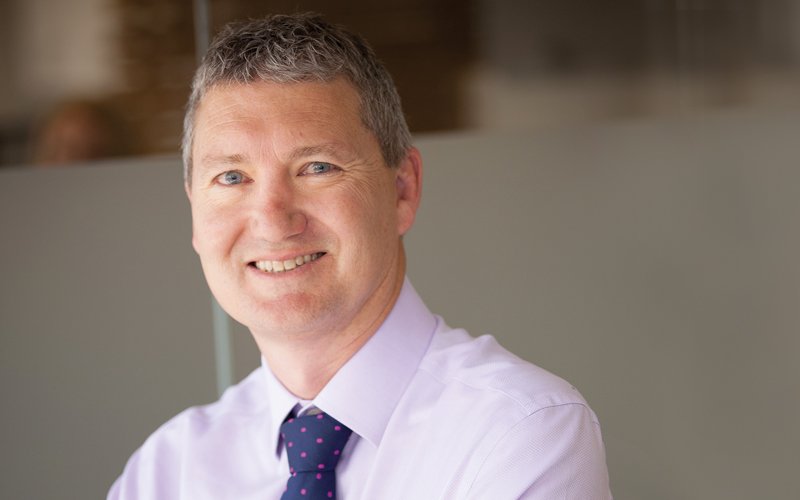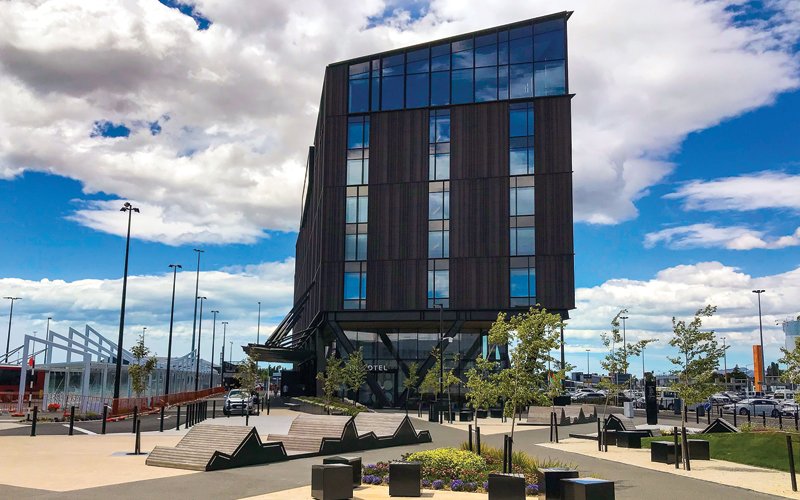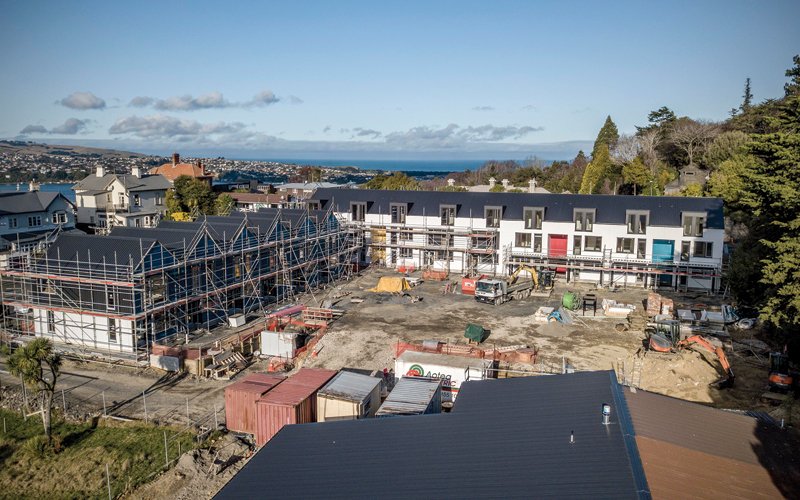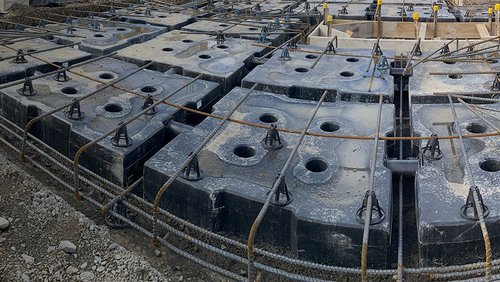12 Oct 2020
Will Covid-19’s economic disruption catalyse a more resilient and sustainable New Zealand?
The Government has primed the pump, announcing a stimulus package that includes $3 billion for infrastructure projects. That’s in addition to the $12 billion “The New Zealand Upgrade Programme” for infrastructure announced in blissfully pre-pandemic January. The May Budget allocated $16 billion of a Covid-19 recovery fund towards relief packages. At the time, it left $20 billion unspent, but in July it announced it would save $14 billion of the recovery fund for a rainy day.
Given this scale of investment, many organisations have stressed the need to be bold and transformational. Beca, for example, in Decarbonising a Prosperous New Zealand, argues we have a gilt-edged opportunity to accelerate the shift to a low-emission economy. In a joint leadership statement endorsed by major engineering firm chief executives, Engineering New Zealand and the New Zealand Institute of Architects speak of the need to “rethink, adapt and reimagine”. And in June, web summit Vision Week aimed to give “purpose and direction” to recovery spending by hashing out a long-term national vision
Vision Week was the brainchild of Infrastructure New Zealand CEO Paul Blair, who says: “What we did with the health crisis has put us in an incredibly good position.
“I think there’s an opportunity here for New Zealand to absolutely transform itself to be one of the leading countries in the world.”

Paul Blair, Infrastructure New Zealand.
Wanted: new thinking now
The key will be to translate heady ambitions and potent funding into effective action on the ground. Engineers are going to be vital to that, says Sustainable Business Council Executive Director Mike Burrell.
“If there’s one thing that defines engineers, it’s taking abstract ideas and making them real,” says Mike, who argues the infrastructural response to Covid-19 must also confront the looming climate crisis.
“The things we build today will lock in carbon and other sustainability decisions for decades, if not longer. This is a time when engineering companies and engineers need to be quite vocal about what kind of policies need to be in place to encourage a greater uptake of sustainable building practices and sustainable engineering in general. I think engineers are in great position to lead that discussion.”
The sector certainly has clout: according to the PwC report, Economic contribution of engineering, based on 2019 data, engineering generates $15 billion per year, or five percent of GDP. But engineers also bring something else. As the joint leadership statement with the architects put it: “We are problem solvers and visionaries”.
These qualities will be needed, along with new ones. Paul Blair suggests the pandemic has highlighted that the world is a more volatile place.
“That makes it more complex to build 30-, 50-, 100-year infrastructure. It’s become even more about scenario-planning, thinking of alternative versions of the future, and allowing for infrastructure to be modified to be made more resilient or upgraded,” he says.
“The opportunity is to move from a linear mindset in approaching problems to one that embraces more of that complexity and the need to collaborate. Diversity of thought is crucial.”
A fresh approach to civil engineering
Holmes Consulting’s Andrea Jarvis CMEngNZ CPEng IntPE(NZ) says this uncertain moment is an opportune time to rethink our approach to civil engineering.
“Things have changed. Budgets are going to be tight. Looking at ways to future-proof and make things more adaptable is going to be important, and whatever we design now has to have long-term applicability.”
In particular, Andrea believes engineers should take a more holistic view of projects.
“The most valuable tool in a civil engineer’s toolbox is the ability to listen,” she says.
If there’s one thing that defines engineers, it’s taking abstract ideas and making them real.
“We can end up becoming experts to the point where we might not necessarily think about how what we’re doing affects the whole. We need to make sure we understand what everybody is trying to achieve in the vision we’re all working towards.”
The benefits are time and money saved, and a better, more integrated, project outcome. She gives the example of stormwater design. If the engineer responsible is thinking holistically they will have engaged early with the landscape architect, looked at the natural surroundings and perhaps considered green infrastructure alternatives to the usual concrete piping.
“Instead of treating stormwater flows as a thing to be hidden away, you can use it as an asset using raingardens or naturalising streams – integrating it into the landscape.”
At Christchurch International Airport, Holmes recently worked with master planners, the airport’s infrastructure planning team and landscape architects Boffa Miskell on a new plaza between the terminal and the Novotel. Andrea says close collaboration ensured cultural aspects, the future use of the site and natural resources were all included in the civil design and planning.
“It was a great process,” she says. “We worked together to get a common understanding of the end goal from day one.”

Christchurch Airport's new plaza area. Image: Holmes Consulting
Time to raise standards?
Jason Quinn CMEngNZ seconds the notion Covid-19 ought to prompt a widening of perspective among engineers – particularly when it comes to buildings. Jason, a former NASA engineer turned passive house designer and building scientist, argues the Covid-19 economic stimulus (which includes 8,000 additional public housing homes) could be the circuit breaker New Zealand needs to start building healthier, higher quality and more durable and energy-efficient houses.
It can be done, he says, citing a co-housing development underway on Dunedin’s High Street that includes 21 “passive house” homes, all with triple glazing, thick walls and superior insulation.
He wants to see the Building Code “fixed” to raise minimum standards, and the Government demonstrate what is possible by significantly lifting the bar when it comes to new social housing. But engineers need to play their part.
“Mostly, engineers are concerned with compliance, not with what the client gets in the end, and to provide the lowest first-cost solution that meets the Code – essentially, design a building that is just above the legal minimum. Builders are taught the same way,” he says, giving the example of thermal bridging being ignored.
“When a client asks ‘Is there enough insulation?’, we will say yes, meaning it complies with the Code. But it ignores the floor slab edges and all these other details we don’t want to get into.
“Engineers need to start looking at the bigger picture for their clients, and to think about the whole building. That might mean a structural engineer putting in a structural system that helps the insulation value as well. If we refuse to widen our perspective then we’re dooming clients to this absolute minimum approach.”

A co-housing development on Dunedin's High Street. Image: Architype
Is it sustainable?
The even bigger picture here is climate change. Infrastructure Minister Shane Jones has stressed the stimulus package is no “green reset”. But that seems like a wasted opportunity to sustainability engineer and New Zealand Green Business Council 2019 Future Thinker of the Year Kate Boylan.
Kate says when the focus is on sustainability, people talk about initiatives such as “cleaning our energy, reducing emissions and waste”.
“This ‘great pause’ provides the perfect opportunity to shift to that kind of thinking for all future infrastructure,” she says, adding “an engineer’s role might be to stay open to new ideas, opportunities and ways of thinking, and to ask the right questions”.
Mike Burrell says the engineering firms he knows from the Sustainable Business Council membership are “walking the talk” when it comes to sustainability. He wants to see engineering as a sector now lead the way, particularly on greening the built environment.
“I’d love to see leadership from the sector stepping forward and saying ‘This is eminently do-able; we have the materials, the know-how and the technology. If you want us to be more sustainable, here’s what we need to see in terms of policy and legal framework.’”
For Paul Blair, it’s vital the response to Covid-19 is a “no regrets” stimulus. In terms of new infrastructure, resilience and sustainability features can no longer be regarded as ‘soft’ and expendable, he says.
“There’s a real opportunity here for us to move our thinking from being wholly focused on economic and physical outcomes... to realising the other value we get from environmental, social and cultural outcomes.”
This article originally appeared in the September 2020 issue of EG magazine.





